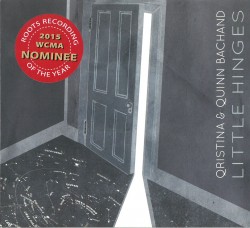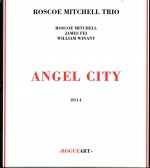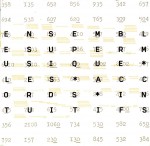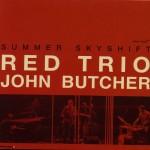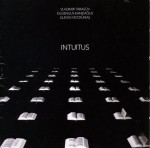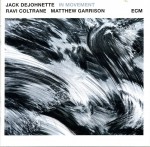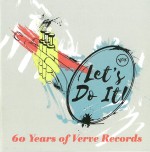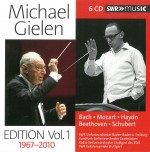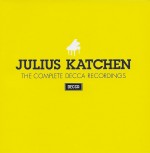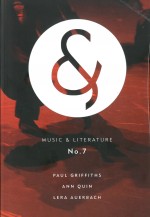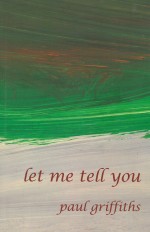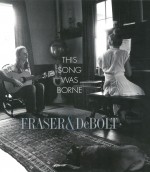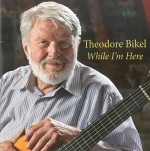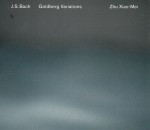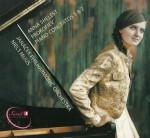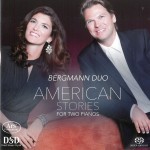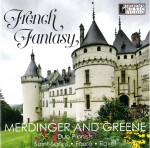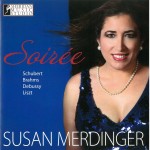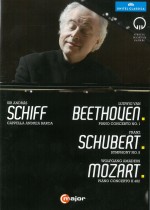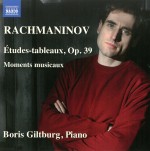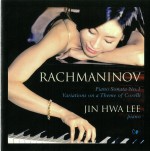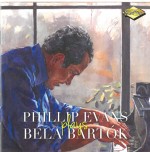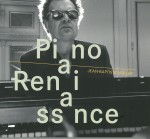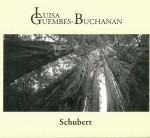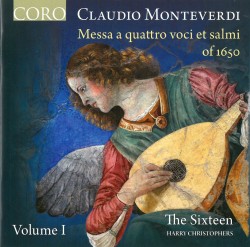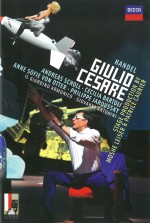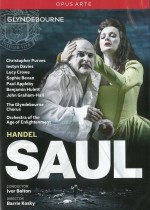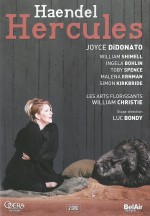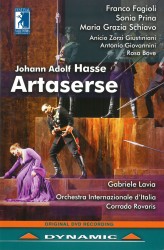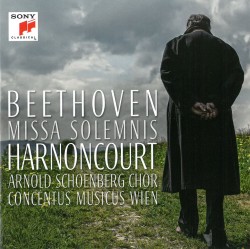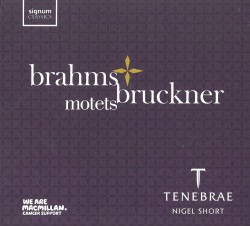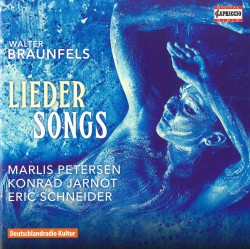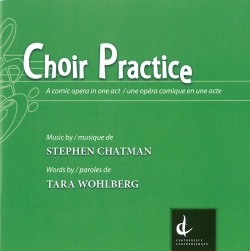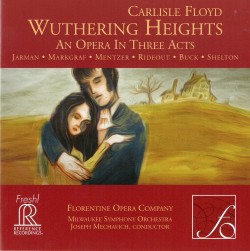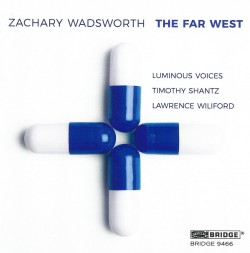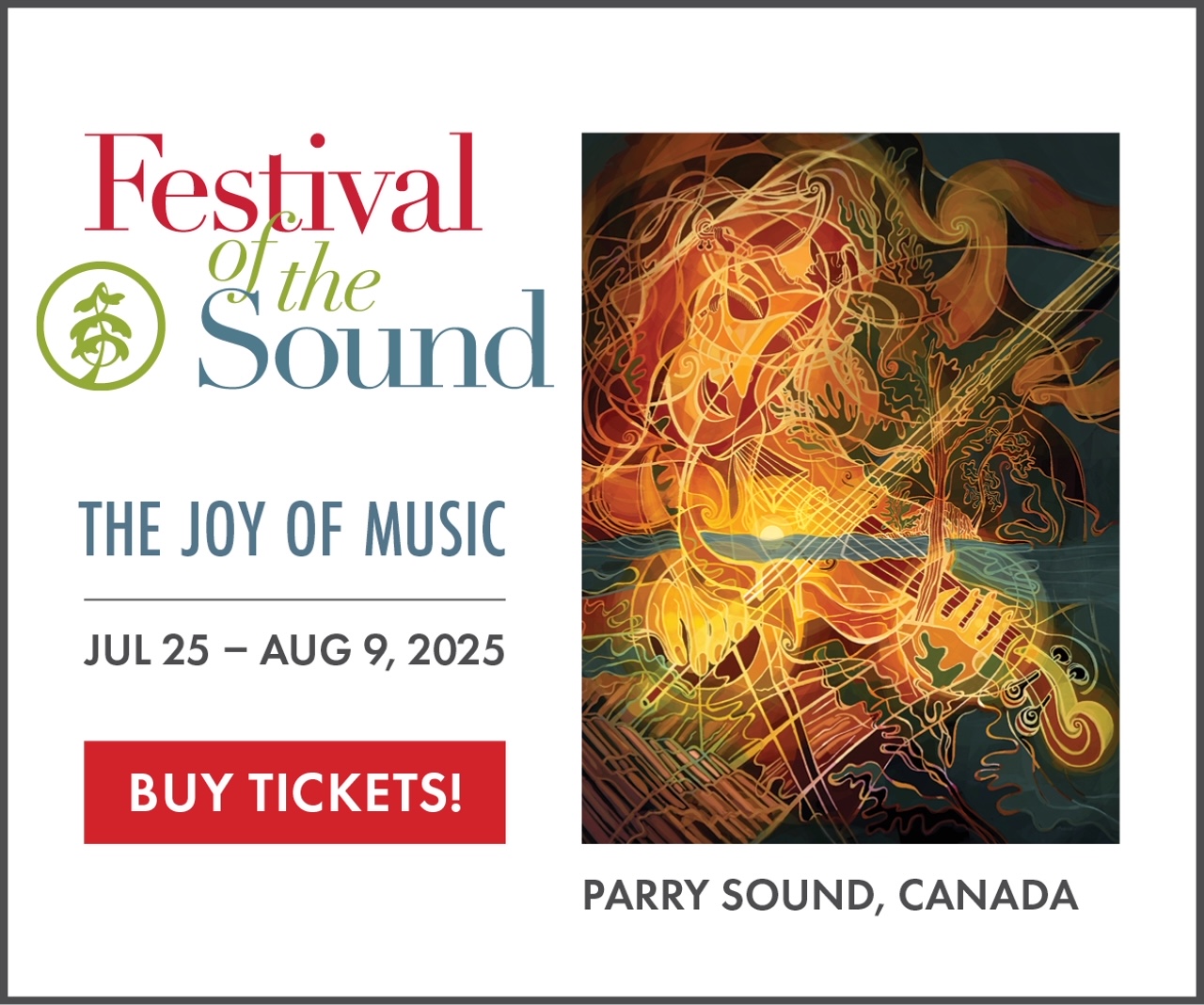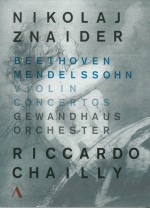
If you’re a fan of violinist
Nikolaj Znaider – and it’s really difficult not to be – then the DVD of his live performances of the
Beethoven and Mendelssohn Violin Concertos with
Riccardo Chailly and the
Leipzig Gewandhaus Orchester is something you really should see
(Accentus Music ACC 20345).Although Chailly chose to leave the orchestra this past June (with no acrimony) it’s clear from these performances that he had a close relationship with the players; his warmth and sensitivity, and the ease with which he communicates, are there for all to see. He also clearly enjoys a similar relationship with Znaider, a big man with a big tone and big technique to match.
The Mendelssohn was recorded in September 2012 and the Beethoven in October 2014, but there is no discernable difference in the quality of the recordings. There is perhaps a slightly different feel to the earlier performance, with some different camera angles and slightly fewer cuts to individual orchestra players at appropriate moments, but the direction for both concerts is unobtrusive and never distracting, with excellent coverage of both Znaider and Chailly.
The performances are quite outstanding, with Znaider in great form and drawing a wonderful sound from the Stradivarius violin once played by Fritz Kreisler; it’s a magnificent instrument, and perfectly suited to Znaider’s playing.
Each performance is followed by a Bach encore, the Beethoven by the Sarabande from the Partita No.1 in B Minor and the Mendelssohn by the Sarabande from the Partita No.2 in D Minor.
Review
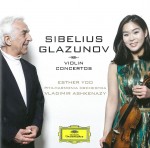 There’s more superb violin playing on Sibelius Glazunov Violin Concertos, the debut Deutsche Grammophon CD by the young American-Korean violinist Esther Yoo with Vladimir Ashkenazy conducting the Philharmonia Orchestra (DG40130).
There’s more superb violin playing on Sibelius Glazunov Violin Concertos, the debut Deutsche Grammophon CD by the young American-Korean violinist Esther Yoo with Vladimir Ashkenazy conducting the Philharmonia Orchestra (DG40130).
Still only 22, Yoo was 16 when she became the youngest-ever prize winner at the International Sibelius Competition in 2010, and two years later was one of the youngest-ever prize winners at the Queen Elisabeth Competition in Brussels. In 2014 she was a soloist on the Philharmonia Orchestra’s tour of South America under Ashkenazy; the recordings here, however, predate that tour, having been made in October 2013 and May 2014.
Like Znaider, Yoo plays on a magnificent Stradivarius instrument, this time the 1704 “Prince Obolensky” violin, and, also like Znaider, has outstanding technique and a wonderful tone. The Glazunov Concerto in A Minor Op.82 gets a ravishingly beautiful performance here, as does the Sibelius Concerto in D Minor Op.47, with Ashkenazy finding some subtle and often unheard nuances in an exceptional orchestral accompaniment.
Two smaller works for violin and orchestra complete the CD. Sibelius’ Suite for Violin and Strings JS185/Op.117 from 1929 was the last concertante work he completed, although it lay undiscovered until the 1980s and was not published until 1995. The titles of the three short movements (in English in the manuscript) reflect the composer’s popularity in Great Britain: Country Scenery; Serenade – Evening in Spring; and In the Summer.
Glazunov’s Grand Adagio is taken from his Op.57 ballet Raymonda from 1898, and depicts the rapturous dance of the two lovers at the centre of the story. It’s a lovely end to a simply stunning debut.
Concert Note: Esther Yoo makes her Toronto debut with the TSO on October 8 and 9 playing Tchaikovsky’s Violin Concerto at Roy Thomson Hall.
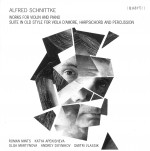 The Russian duo of violinist Roman Mints and pianist Katya Apekisheva are the performers on an outstanding 2CD set of Works for Violin and Piano by the Russian composer Alfred Schnittke (quartz QTZ2116).
The Russian duo of violinist Roman Mints and pianist Katya Apekisheva are the performers on an outstanding 2CD set of Works for Violin and Piano by the Russian composer Alfred Schnittke (quartz QTZ2116).
Mints grew up with Schnittke’s music, and feels that it frequently illustrates “even too accurately the life we lived back then” in the former Soviet Union. He performed all of Schnittke’s music for violin and piano in a concert at the Moscow Conservatory several years ago, and this new recording is essentially a reconstruction of that concert program.
Mints plays the three sonatas in reverse order – going “from death to life rather than the other way round” – because of the cheerless and oppressive nature of the Sonata No.3. It was written in 1994 after Schnittke had suffered several severe strokes, and the score is consequently extremely bare. The Sonata No.1 was written during the composer’s 12-tone serialism period and has more than an echo of Berg and Shostakovich.
The Sonata No.2 “Quasi una Sonata” is a technically challenging work with a striking opening and equally striking ending. There are percussive piano hammer chords, huge silences, tonal and atonal passages, structured and aleatoric sections, some stunning piano textures and extended violin techniques; and an ending where 46 consecutive identical piano chords crash into dissonance, leaving the unaccompanied violin to take the sonata to its close. It’s a simply astonishing piece that feels like the emotional centre of the recital.
The Suite in Old Style, five short pieces drawn from Schnittke’s numerous film scores and presented here in an arrangement for viola d’amore, harpsichord and percussion, could hardly be more different, the central Minuet having a distinct Harry Potter flavour.
Three short pieces round out the recital: the Congratulatory Rondo written for the first violinist of the Borodin Quartet; the brief but somewhat grotesque Polka from the incidental music for a stage play; and Stille Nacht, a startlingly eerie arrangement of Franz Gruber’s carol Silent Night. The latter, written as a Christmas greeting for Gidon Kremer, has a growing dissonance in the violin and an increasingly ominous low off-key bass pedal note in the piano, the piece ending with a low Shostakovich-like violin figure that sounds like a distant air raid warning. This night may well be silent, but it’s filled with an air of apprehension and unease.
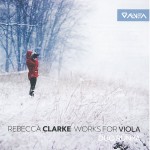 The English composer and violist Rebecca Clarke (1886-1979) may well be little known to the general music public – let alone the public in general – but viola players have long known her qualities and her contributions to their repertoire and will no doubt welcome the new CD Rebecca Clarke Works for Viola, featuring the Duo Rùnya of violist Diana Bonatesta and pianist Arianna Bonatesta (ÆVA Æ16008).
The English composer and violist Rebecca Clarke (1886-1979) may well be little known to the general music public – let alone the public in general – but viola players have long known her qualities and her contributions to their repertoire and will no doubt welcome the new CD Rebecca Clarke Works for Viola, featuring the Duo Rùnya of violist Diana Bonatesta and pianist Arianna Bonatesta (ÆVA Æ16008).
Clarke settled in the United States in the early 1940s and stopped composing after marrying the pianist James Friskin in 1944. Her music was largely forgotten until 1976, when a radio broadcast celebrating her 90th birthday revived interest in it; even so, much of her music remains unpublished.
As a professional viola player, a large amount of Clarke’s music was written for her own use. The CD opens with the substantial Viola Sonata from 1919, a beautiful work with hints of Debussy and other contemporaries that has remained part of the standard viola repertoire since its publication in 1921. Morpheus, her first major work for the instrument, was written in 1918.
Six shorter individual works for viola and piano are mostly from the 1909 to 1925 period, and violinist Gabriele Campagna joins the Duo for the final track, the Dumka for violin, viola and piano from 1941.
Diana Bonatesta has a big, warm tone and plays beautifully throughout a really lovely CD.
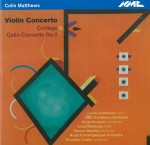 The contemporary English composer Colin Matthews, who turned 70 earlier this year, is celebrated with the CD Violin Concerto on the label he founded, although the CD also features his Cello Concerto No.2 and the orchestral work Cortège (NMC D227).
The contemporary English composer Colin Matthews, who turned 70 earlier this year, is celebrated with the CD Violin Concerto on the label he founded, although the CD also features his Cello Concerto No.2 and the orchestral work Cortège (NMC D227).
Matthews is a prominent figure on the English scene, having worked with Benjamin Britten, Imogen Holst and Deryck Cooke in the 1970s and having been associate composer with the London Symphony Orchestra in the 1990s and the Hallé Orchestra in the 2000s. He is currently professor of composition at the Royal College of Music.
There are no new recordings here. The Violin Concerto is a two-movement work written for Leila Josefowicz between 2007 and 2009, with this performance a live recording of a BBC Proms concert at Royal Albert Hall on July 28, 2010; Josefowicz is the soloist with the BBC Symphony Orchestra conducted by Oliver Knussen. It’s a fine work with some beautiful solo writing and constantly changing speeds and textures, and an orchestral accompaniment in the opening section that is highly reminiscent of Alban Berg.
The Cello Concerto No.2 is heard here in another BBC recording, this time made in April 2002 and featuring cellist Anssi Karttunen, with Rumon Gamba leading the BBC Symphony Orchestra. It was written between 1994 and 1996 for Mstislav Rostropovich, and consists of five short movements played without a break.
Cortège is a decidedly dark single-movement work for large orchestra dating from 1988, played here by the Royal Concertgebouw Orchestra under Riccardo Chailly in a recording made at the Concertgebouw, Amsterdam, in December 1998.
Performances throughout are top-notch in a CD that is a fine birthday tribute to a significant musical personality.
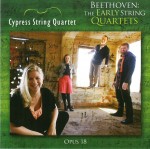 Beethoven: The Early String Quartets (AVIE AV2348) is a 2CD set of the Opus 18 quartets by the Cypress String Quartet that not only completes their recording of the complete cycle but also marks their final season; after 20 years together the quartet disbanded after a concert in San Francisco on June 26. Their 2012 self-released recordings of the late quartets have also been reissued as a 3CD set alongside this new issue; their recording of the middle quartets was released on AVIE Records in 2014.
Beethoven: The Early String Quartets (AVIE AV2348) is a 2CD set of the Opus 18 quartets by the Cypress String Quartet that not only completes their recording of the complete cycle but also marks their final season; after 20 years together the quartet disbanded after a concert in San Francisco on June 26. Their 2012 self-released recordings of the late quartets have also been reissued as a 3CD set alongside this new issue; their recording of the middle quartets was released on AVIE Records in 2014.
This is the only volume of the series that I have heard, and it really made me want to listen to the others, especially to see what the ensemble does with the late quartets. The playing here never lacks bite and intensity when it’s needed, but there’s an overall sensitivity and thoughtfulness which is very appealing; this is refined playing, but never superficial. It’s also very strong rhythmically, particularly in the tricky start to the Presto final movement of the Op.18 No.3 D Major quartet, which can so easily be quite ambiguous without a clearly defined pulse.
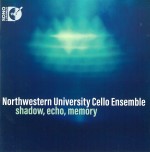 I’ve had the occasional cello ensemble CD over the past year or so, but nothing that approaches the sheer size of the Chicago area Northwestern University Cello Ensemble under their director Hans Jørgen Jensen on their new CD Shadow, Echo, Memory (Sono Luminus SLE-70004).
I’ve had the occasional cello ensemble CD over the past year or so, but nothing that approaches the sheer size of the Chicago area Northwestern University Cello Ensemble under their director Hans Jørgen Jensen on their new CD Shadow, Echo, Memory (Sono Luminus SLE-70004).
In May 2013 Jensen, Northwestern’s cello professor, brought together an ensemble of Northwestern students, Chicago-area high school cellists and Northwestern alumni (several of whom are now active in major U.S. symphony orchestras and music schools) to record the Adagietto from Mahler’s Fifth Symphony. This memorable event, with over 50 cellists participating, led to the continuation of the project and the decision to record this debut album, although the remaining tracks here feature ensembles comprising from eight to 23 cellos.
The works range from Fauré’s Après un rêve (1878) and Rachmaninov’s Vocalise (1915) through Ligeti’s 1966 Lux Aeterna to four 21st-century works: Zachary Wadsworth’s Three Lacquer Prints (2012/14); Hans Thomalla’s Intermezzo (2011); Aaron Jay Kernis’ Ballad (2004); and the 2014 title track by the Canadian composer and Northwestern ensemble member Michael van der Sloot.
Finally, the full ensemble is joined by six basses and a harp in the original 2013 recording of the Mahler Adagietto, providing a lovely ending to a CD full of sonic depth and richness.
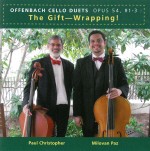 Two cellos may not have much chance of sounding like 50, but in the hands of Jacques Offenbach, himself a virtuoso cellist, they can still sound like a small ensemble. Paul Christopher and Milovan Paz are the cellists in Offenbach Cello Duets Op.54, #1-3, The Gift – Wrapping! (Human Metronome HMP 106-2016), the fifth and final CD in their complete recording of the six books of duets of increasing difficulty that comprise the Cours méthodique de duos pour deux violoncelles Opp.49-54.
Two cellos may not have much chance of sounding like 50, but in the hands of Jacques Offenbach, himself a virtuoso cellist, they can still sound like a small ensemble. Paul Christopher and Milovan Paz are the cellists in Offenbach Cello Duets Op.54, #1-3, The Gift – Wrapping! (Human Metronome HMP 106-2016), the fifth and final CD in their complete recording of the six books of duets of increasing difficulty that comprise the Cours méthodique de duos pour deux violoncelles Opp.49-54.
The Op.54 duets rank as Trés Difficiles (or “formidably difficult” in Christopher’s words) with extensive double and triple stops over the entire range of positions and challenges that include rapid scale work, large jumps in pitch, arpeggios, octaves and extremely high tessitura. Christopher and Paz surmount them all with ease and are clearly having a great time in doing so.
Don’t be fooled by the apparent pedagogical nature of the Method’s title; Offenbach is best known for his operettas, and his gift for melody is evident throughout these delightful duets. In Christopher’s opinion they transcend their original purpose and are the high water mark for the cello duets genre, and given the evidence here it’s difficult to disagree with him.
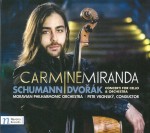 The young Venezuelan-American cellist Carmine Miranda is the soloist on a terrific CD of the Schumann and Dvořák Concerti for Cello & Orchestra with the Moravian Philharmonic Orchestra under Petr Vronský (Navona Records NV6034).
The young Venezuelan-American cellist Carmine Miranda is the soloist on a terrific CD of the Schumann and Dvořák Concerti for Cello & Orchestra with the Moravian Philharmonic Orchestra under Petr Vronský (Navona Records NV6034).
Composed in October 1850, the Schumann Cello Concerto in A Minor Op.129 has been given a rough ride by many critics over the years, with criticisms ranging from a lack of virtuosity in the solo part to its being evidence of the composer’s mental decay – within a week of completing the proofreading for the published version in February 1854, Schumann attempted suicide by throwing himself into the Rhine.
The review copy of this CD came with Miranda’s fascinating and extremely detailed article Decoding the Schumann Cello Concerto, reprinted in full from the Spring 2016 edition of The Musical Times, in which he argues convincingly that the work has long been misunderstood, and that Schumann’s decisions in the concerto, far from being a product of any mental deterioration, are in fact calculated, and clear proof of his knowledge of, and use of, cryptography – or cyphers – in his music. The concerto is apparently dominated by references to the initial letters of the full names of Schumann’s wife Clara and the composer himself, and these references determine the structure of the melodies and the choice of keys.
Given this level of insight it should come as no surprise that the performance here is outstanding – sensitive, passionate and rhapsodic – and makes the strongest possible case for elevating the concerto to the same class as the Elgar and the Dvořák.
Miranda brings the same rich, full-toned playing and the same depth of historical research to the Dvořák Concerto in B Minor Op.104, resulting in another glorious performance of this wonderful piece.
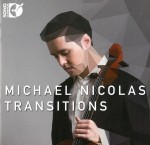 And finally, to a single cello. Transitions is the first solo CD from the Canadian-born New York cellist Michael Nicolas, a performer with an impressive reputation on the contemporary scene (Sono Luminus DSL-92202).
And finally, to a single cello. Transitions is the first solo CD from the Canadian-born New York cellist Michael Nicolas, a performer with an impressive reputation on the contemporary scene (Sono Luminus DSL-92202).
Nicolas describes the CD as an attempt to show that humans and computers can co-exist musically and explores the relationship from as many angles as possible. The works here were written by composers from three continents and span over 50 years and include duos for cello and electronics, cello solos with electronic backing tracks, pieces with multi-layered cello tracks and a piece for solo cello.
The composers include the Argentinian-American Mario Davidovsky (b.1964), the Americans Steve Reich, David Fulmer and Annie Gosfield, Iceland’s Anna Thorvaldsdottir (b.1977) and the Peruvian Jaime E. Oliver La Rosa (b.1979). Davidovsky’s Synchronisms No.3 for Cello and Electronic Sounds was written in 1964; Thorvaldsdottir’s solo cello title track dates from 2014.
Nicolas hopes that the listener “will be exposed to many new sounds and ways to organize them, and be able to connect them to more traditional ideas of musical expression.” Certainly this CD will go a long way towards helping them do just that. His playing and extended techniques are outstanding, and the works are beautifully recorded.
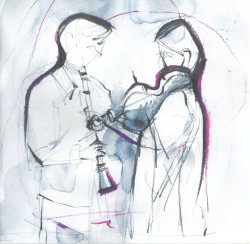 Emilyn Stam and John David Williams
Emilyn Stam and John David Williams

